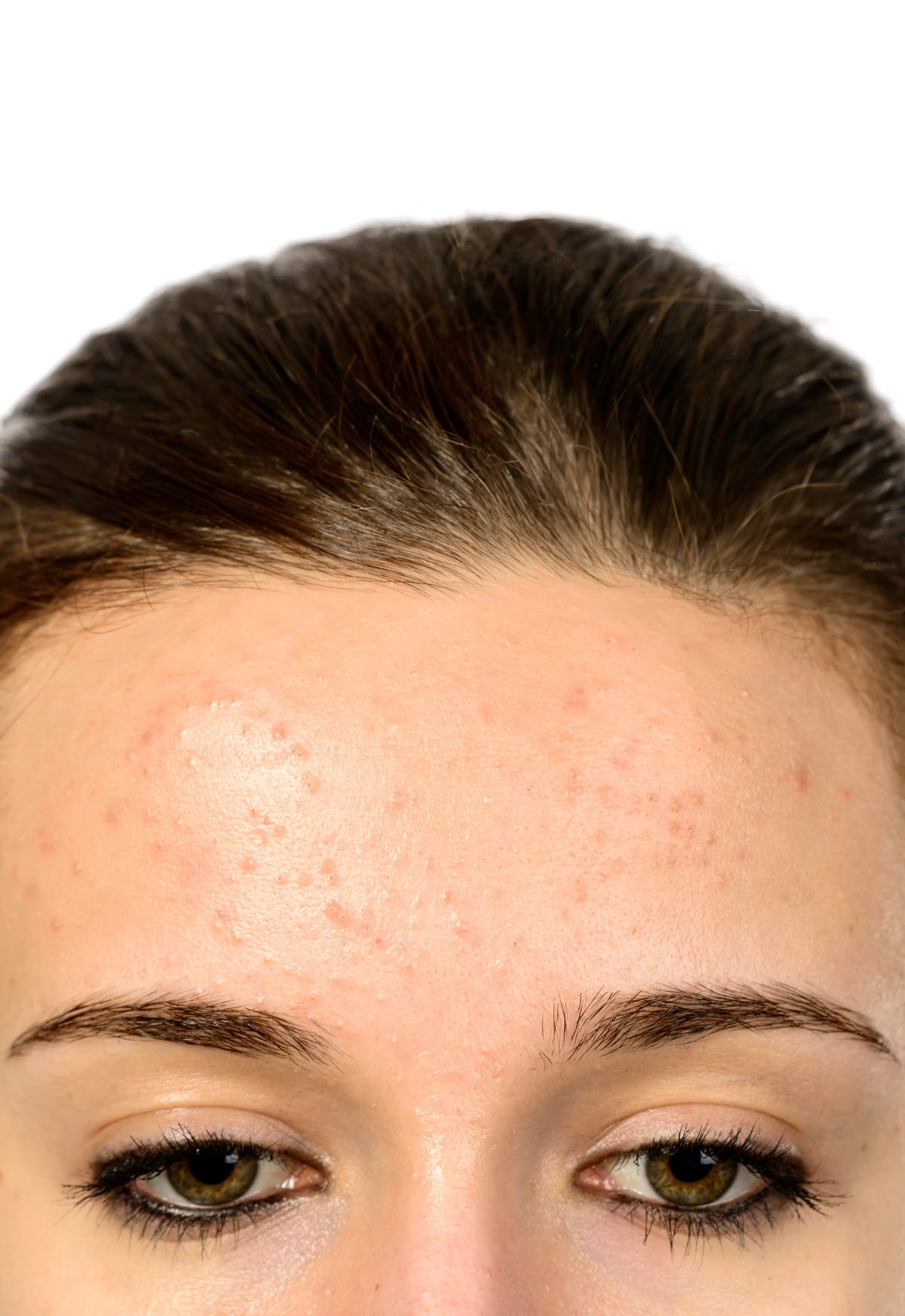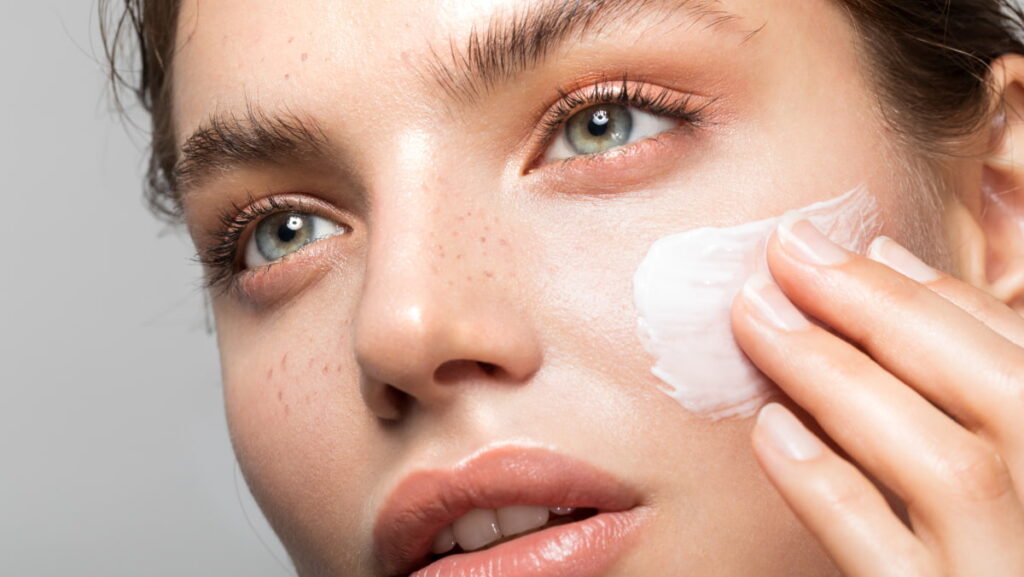
Do you ever look in the mirror and wonder why your skin appears grainy or rough? Grainy skin texture on face (sometimes referred to as ‘orange peel skin’) is often associated with growing older.
Grainy skin typically appears as small hardened bumps on the surface, which give off an uncomfortable ‘sandpaper-like’ feel that makes facial features seem uneven or lumpy.
Grainy skin texture could indicate more serious underlying skin health concerns such as dryness or sun damage.
If you have grainy skin, don’t worry – it’s not irreversible! In this article, we’ll look into what causes this skin texture and provide proven strategies to give back that youthful radiance you desire.
Knowledge is power when it comes to skincare, so let us give you all of the facts and solutions for dealing with grainy skin texture.
Below is more insight into what might be happening beneath your skin’s surface!
Understanding Grainy Skin Texture On Face
If you’ve noticed a rough, uneven texture on your skin, it might be an indication of “grainy” skin. This term doesn’t refer to an actual medical issue but rather an expression for bumpy, coarse-looking, or rough-feeling skin that might need a little extra TLC.
Grainy skin may be caused by several different factors. The most common is dead skin cell accumulation on your face.
When these dead cells don’t shed properly, they clump together into small bumps that give off that grain-like effect.
Environmental factors can also play a substantial role in producing grainy skin texture. The following all play a part in damaging the surface of your skin:
- Exposure to harsh weather conditions like wind
- Prolonged sun exposure without sufficient protection
- Pollution
Not only can dead skin cells and the environment negatively affect your skin texture, but so can your lifestyle decisions:
- Lack of sleep or hydration
- Poor nutritional choices (like eating too much sugar)
- Smoking cigarettes
A few other potential causes for grainy facial texture include:
- Aging: With age comes slower cell renewal processes, which leads to dead cells becoming trapped on our faces for too long and eventually appearing as wrinkles or graininess on facial structures.
- Dehydration: Without adequate internal (drinking enough water) and external hydration (using moisturizer on an ongoing basis), dry patches could occur.
- Over-exfoliation: Excessive exfoliation can seem like a good solution to creating a smoother-looking complexion, but too often results in reddening, irritation, and bumpy surfaces instead.
Addressing grainy facial texture requires first understanding what’s contributing to it and then finding a solution.
Seeking help from skin care professionals or trying different approaches at home might also prove effective.

The Underlying Causes of Your Skin’s Roughness
If your skin has been feeling like sandpaper, its grainy texture could be the cause. But what’s causing your skin to be grainy, to begin with?
Hydration! When your body does not get enough liquids, neither does your skin. This can result in dry patches on your face, giving it an uneven and rough feel.
Sun damage could also be a cause. Prolonged exposure to UV rays without adequate sunblock can damage your skin’s surface and result in a rough and uneven texture, producing uneven pigmentation and leading to discoloration and peeling.
Aging also plays a part. As you age, so does your skin, and collagen production dwindles with it, compromising its elasticity and smoothness.
Environmental factors, like pollution or harsh weather conditions, can also contribute to a grainy facial texture. Now we know some potential reasons for grainy facial texture:
- Dehydration
- Sun damage
- Aging
Let’s do something about it!
How Lifestyle Affects Skin Texture
There are many factors that can contribute to a rough or bumpy skin texture, and surprisingly, your lifestyle choices play a significant role.
Let’s begin with your diet. What you eat directly impacts your skin’s health. Consuming high sugar or unhealthy fat foods may contribute to inflammation leading to rough and uneven skin textures.
On the contrary, eating fruits, vegetables, and lean proteins promote healthy cell regeneration for a smoother complexion.
Hydration is key for keeping your skin soft and supple. When dehydrated, your complexion often appears duller or rougher than usual – be sure you drink plenty of water every day!
Sleep quality is also very important. Poor sleeping habits can speed up the aging processes and result in fine lines and wrinkles with uneven textures that lead to further signs of aging on our faces.
Regularly excising or participating in physical activities can increase your blood circulation which feeds our cells, including those found within our largest organ — our skin!
This results in a healthier-looking complexion with improved texture.
In order to keep your skin looking youthful and radiant, keep in mind that the following lifestyle choices are key and can significantly make a difference in your skin texture:
- Diet: Improper diet can lead to inflammation and a rough texture
- Hydration: Keeps your skin bright and youthful
- Sleep: Lack of sleep accelerates the aging process, which increases uneven texture
- Exercise: Improves overall health and appearance
Next time you notice graininess on your face, remember these points. Achieving a smooth facial glow through lifestyle modifications alone can sometimes do the trick.
Effective Treatments For Smoother Complexion
Let’s dive into some effective treatments that’ll help you get rid of the grainy texture and achieve a smoother complexion.
Regular exfoliation can help combat rough, bumpy skin. Exfoliants work by dislodging dead cells from the surface of your skin to reveal fresher and smoother layers beneath.
The two most common exfoliators are physical scrubs or chemical AHA/BHA products, with gentle options being suggested at first before gradually increasing intensity if required.
Retinoids are also extremely helpful. These vitamin A derivatives have been scientifically shown to accelerate cell turnover, eventually diminishing signs of texture on your skin over time.
Over-the-counter products usually contain retinol, while stronger options like tretinoin are only available with a valid prescription.
Moisturizing is key! Hydrated skin tends to appear plumper and healthier, which may make your skin’s texture appear smoother and more vibrant.
Professional treatments like microdermabrasion, chemical peels, or laser resurfacing should always be done by trained professionals in order to minimize risks and ensure maximum benefits.
Integrating healthy lifestyle habits such as drinking plenty of water, eating a balanced diet rich in antioxidants, and protecting yourself from sun damage into your routine will have a tremendous effect on the complexion. Remember:
- Gently introduce new treatments
- Keep your routine consistent
- Lifestyle choices play a significant role
Achieving a smoother complexion takes patience, persistence, and the right products or treatments – there are no overnight miracles.

Conclusion: Towards a Healthier, More Radiant You
Now that you understand why you might have grainy skin, you can start working on improving its condition.
Healthy and radiant skin goes beyond looks, it’s about your overall well-being. Keep in mind, however, there’s no one-size-fits-all solution for grainy skin texture – what works for others may
not necessarily apply in your case. Some reasons could be:
- Genetics: Some individuals inherit larger pores which can give their skin a grainy texture.
- Aging: With age comes less collagen production in your body, which leads to a loose and textured appearance.
- Skin Damage: Sunlight exposure or harsh skincare products can harm the surface of your skin, leading to uneven texture.
When choosing an ideal skincare regime for yourself, all of these factors should be taken into consideration.
That said, here are some tips that might help:
1. Regular Exfoliation: By regularly exfoliating, dead cells from your skin’s surface are eliminated, revealing a fresher-looking complexion.
2. Moisturizing: Maintaining adequate levels of water on your face aids in protecting its natural defense mechanism against environmental stressors and helps preserve natural protective barriers.
3. Apply sunscreen: Securing yourself against UV rays prevents premature aging and unwanted textures from being reduced or avoided altogether.
4. Choose healthy lifestyle habits: Eating foods that are high in vitamins and antioxidants, combined with regular physical activity, is beneficial in maintaining overall wellness— including your skin
And remember, don’t hesitate to consult a dermatologist. Their expertise and tools allow them to tailor solutions that perfectly align with your skincare journey toward a healthier and more radiant-looking complexion!
Frequently Asked Questions
Related Posts
- How To Get Rid Of Milia On Face? Your Quick And Easy Guide
- Closed Comedones VS Fungal Acne: 5 Big Differences
- How To Get Rid Of Oily Skin: 12 Effective Tips To Try
